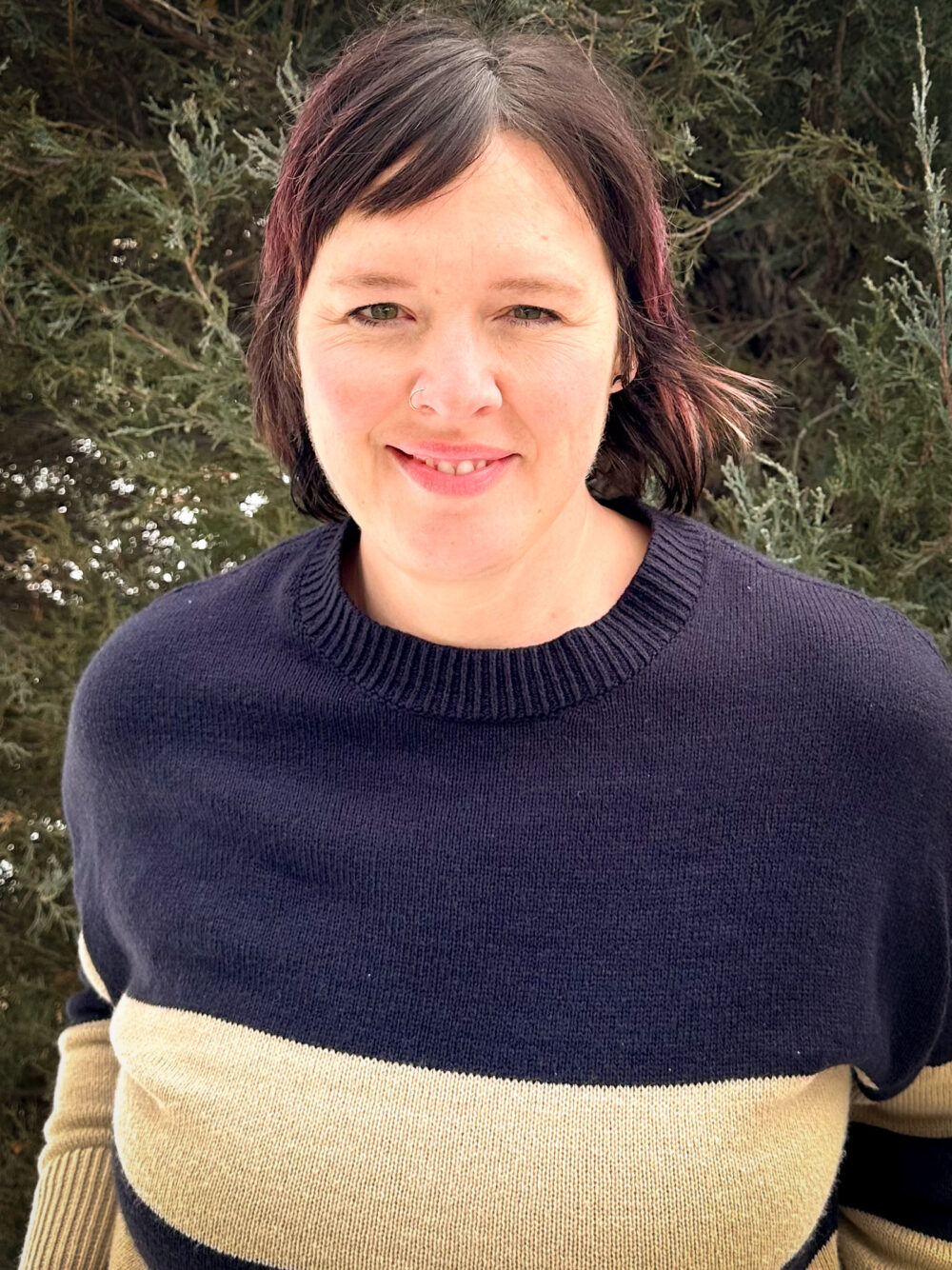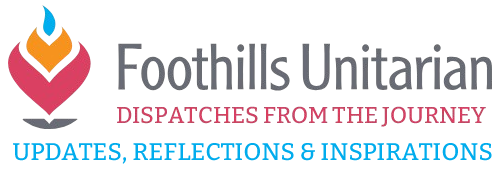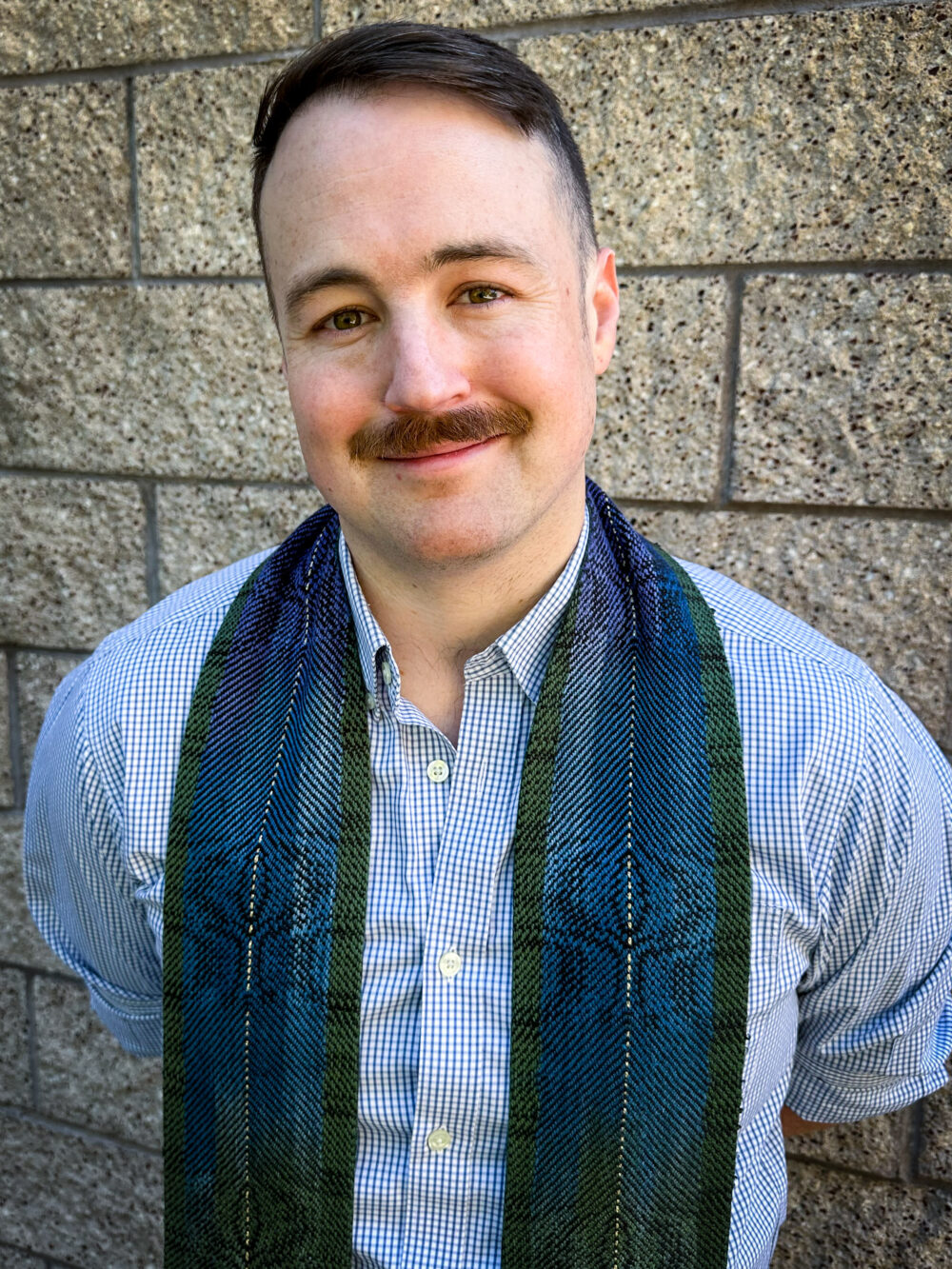By Karen Marcus
This post —one in a series about the 7 UU principles — explores the 7th one, “Respect for the interdependent web of all existence of which we are a part.” The “interdependent web of existence” is an abstract concept and, therefore, one that applies to many aspects of life. I asked several Foothills members to share what comes to mind for them when considering the 7th principle.
Natalie Shrewsbury, who has been attending Foothills for two years and has been a member for the last nine months, notes that when you see the world through the lens of the 7th principle, decisions become more complex because you have to consider all factors in every situation. For example, “If you’re thinking about how to be a good land steward in your own backyard, maybe you want to have a garden, or some chickens. You need to consider things like the history of the location, the movement of the sun, how people and animals use the space, and how the land might be used in the future, as well as how your actions might affect your neighbors and the larger community. The idea is to create a space that works for every living being in it: plants, animals, and people.”
Natalie is concerned that, in the current political climate, decisions are being made too quickly to use this type of problem-solving to take all factors into consideration. For example, she says, “To dismantle the health care system and come up with something new takes much longer than three months. It seems decisions are being made so fast that the decision makers aren’t honoring a wider view.”
As a Foothills member for 30 years, Brian Woodruff was around in the 1980s, when Foothills minister Walter Royal (Roy) Jones was instrumental in formulating the 7 principles. Brian explains, “Consensus on the 7th principle was difficult, and Roy’s language ‘respect for the interdependent web’ won.” As someone who has worked in air pollution throughout his career, Brian is proud of the UUA for including the environment among its principles. Brian sees the 7th principle playing out for some in changed behavior, such as the reduction of energy and raw materials in our homes. For others, he observes, “It manifests as political activism to raise awareness and fight for better environmental laws.”
Brian points out a drawback of the 7th principle: it doesn’t require action. He says, “Pride isn’t enough. I’m interested in motivating Foothills to take action on the 7th principle, in more ways than greening our buildings. Considering that climate change is the most significant threat to planetary health, what might we aspire to do together with the support of a principled church community?”
Ann Molison, along with her husband Bob, attended Foothills from 1983 to 1989, returned in 2000, and have been attending ever since. For her, the 7th principle relates to her involvement with Foothills itself. She says, “Membership has helped me develop a deeper involvement in our church.” Ann believes the 7th principle reflects our relationship to the world around us, saying, “We need this world and it needs us. Not just the people, but the environment both within and outside our church.” Church involvement has helped her to concentrate less on herself and to reach out to others. For example, Ann sits at the Welcome Kiosk on Sundays, helps with the Sanctuary program, attends workshops on the environment, and attends church services whenever possible. She remarks, “Participating in these activities has been a freeing experience and gives meaning to my commitment to Foothills.”
Laurie Seiler, who has been a Foothills member for 10 years, has always felt connected to “the interdependent web of all existence of which we are a part.” She says, “I continue to learn more about how to respect it. This is both an integral part of my spirituality and part of being a responsible steward of the planet we share with all life forms. Connecting in this way allows me to transmute fear, disappointment, and stress into love, joy, peace, and hope. It also motivates me to do what I can to care for our planet and everyone on it, now and into the future.”
Laurie observes that it’s easy to think only of survival for ourselves in the current moment and forget to look at all life over an extended period of time. She notes, “When we remember to step back and look at the bigger picture we begin to understand and live in integrity with the 7th principle.”
Like Laurie, for Foothills member Peg MacMorris, “The ‘interdependent web’ embodies the idea of living in harmony with the earth; living in good conscience means limiting our carbon footprints and trying to live as sustainably as possible.” These principles have guided Peg’s life. She notes, “I’m inspired and sustained by time spent experiencing the natural environment, in large and small ways.”
At her former church, Peg worked on environmental initiatives, and at Foothills, she says, “I strive to make our congregation aware of climate justice. I also hope that care for our environment enters into all considerations within our church life, and within the lives of each congregation member.” She is also organizing efforts to help provide energy efficiency and weatherization enhancements for families with low incomes in Fort Collins. The dangers of not making these efforts, says Peg, are “a life out of harmony with the environment, a lack of awareness of our natural surroundings, and a life that is not sustainable for individuals or the community.”
What a great variety of interpretations on the 7th principle. What does it mean to you? Feel free to share your thoughts in the comments!

Katie believes the best things in life are the result of collaboration and diverse perspectives coming together to produce something greater than any individual could. She is passionate about systems, efficiency and collaboration for better community outcomes. She loves dreaming up the big picture and drafting the roadmap to make it happen. She has a background in operations, fundraising, communications and program development, as well as over a decade of nonprofit management experience in Northern Colorado.
Her greatest joy in life comes from her family. Her husband, Steven, a principal at Wellington Middle School, and daughters Emmaline and Esmae are the lights of her life. Together they love mountains, music and all kinds of food. She is passionate about women supporting other women in all stages of life and especially through the critical moments that make or break us. She believes that one of the most important things in life is to be kind.
Being outdoors makes her soul come alive. It always roots her in gratitude and is one of the reasons she loves living in Fort Collins.


